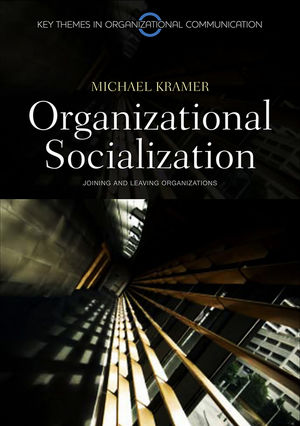Organizational Socialization: Joining and Leaving OrganizationsISBN: 978-0-7456-4634-3
Hardcover
208 pages
May 2010, Polity
 This is a Print-on-Demand title. It will be printed specifically to fill your order. Please allow an additional 10-15 days delivery time. The book is not returnable.
Other Available Formats: Paperback
|
||||||
The experiences of joining and leaving organizations permeate most
people’s lives in the 21st century. This book provides a
framework for increasing our understanding of those experiences
using a mixture of specific examples, scholarly findings, and
theoretical concepts and models.
Each chapter begins with a realistic scenario that illustrates its concepts and theories. Then the chapters explore the entire socialization process from anticipatory socialization, in which individuals choose occupations and organizations to join, to voluntarily or involuntarily exit from those same organizations. In between, chapters examine the process of entering organizations, learning their culture, developing personal relationships, and experiencing individual transitions, like promotions, and organizational transitions, like mergers and acquisitions, as part of the ongoing socialization process. It expands the study of socialization by considering socialization of organizational volunteers as well as paid employees, and by exploring the ways that work-family issues and new technologies influence the socialization process. Throughout, particular attention is paid to the role and importance of communication in these experiences.
The book’s organization allows scholars, students, and organizational participants in every walk of life to increase their understanding of their organizational experiences. It will be particularly useful for those studying organizational communication, business and management.
Each chapter begins with a realistic scenario that illustrates its concepts and theories. Then the chapters explore the entire socialization process from anticipatory socialization, in which individuals choose occupations and organizations to join, to voluntarily or involuntarily exit from those same organizations. In between, chapters examine the process of entering organizations, learning their culture, developing personal relationships, and experiencing individual transitions, like promotions, and organizational transitions, like mergers and acquisitions, as part of the ongoing socialization process. It expands the study of socialization by considering socialization of organizational volunteers as well as paid employees, and by exploring the ways that work-family issues and new technologies influence the socialization process. Throughout, particular attention is paid to the role and importance of communication in these experiences.
The book’s organization allows scholars, students, and organizational participants in every walk of life to increase their understanding of their organizational experiences. It will be particularly useful for those studying organizational communication, business and management.



